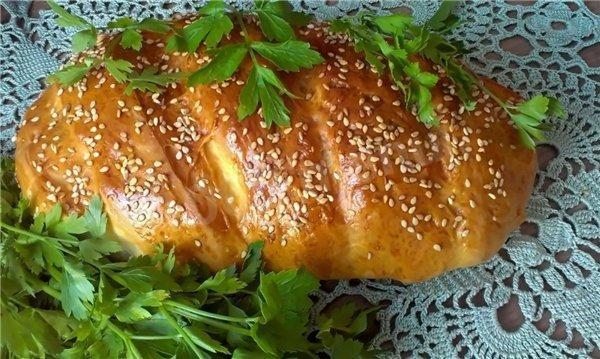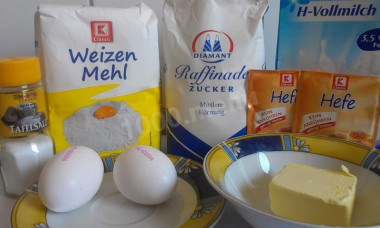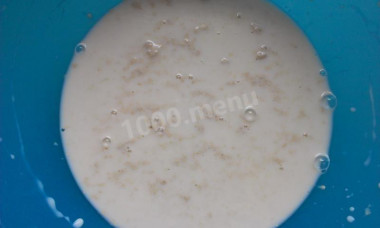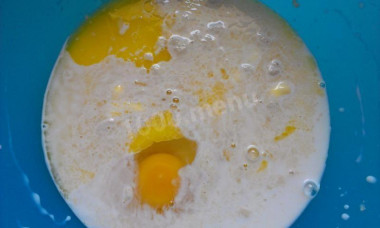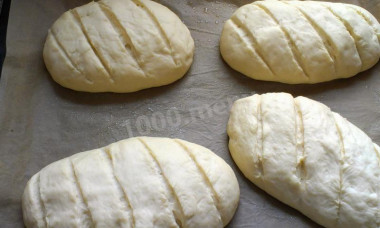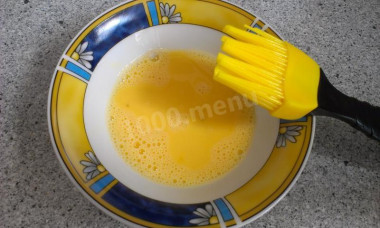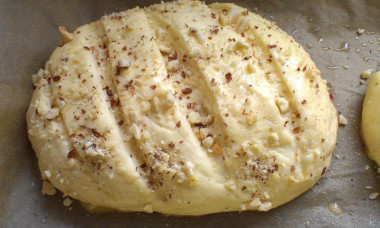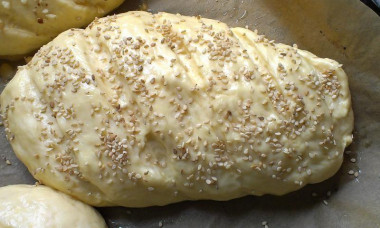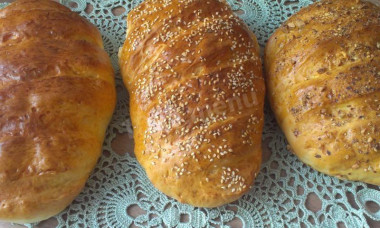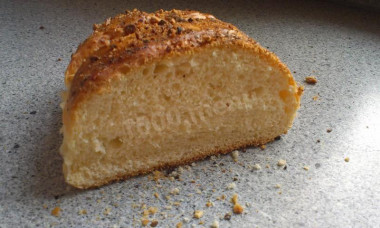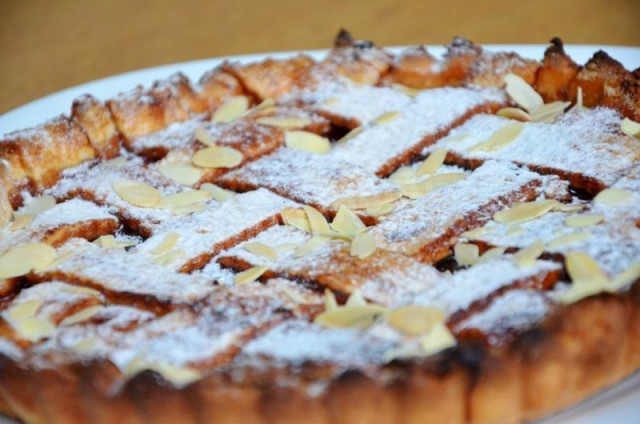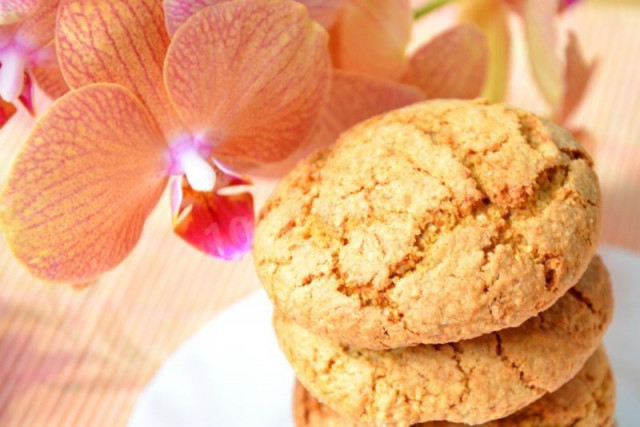Composition / ingredients
Step-by-step cooking
Pour warm milk or warm water into a cup and dissolve the yeast.
Add salt, sugar, 1 egg, melted margarine or vegetable oil and stir well.
Add the sifted flour and knead a homogeneous, not very steep dough.
Next, we cover our dough and send it to a warm place so that it fits. It will take 40 - 60 min.
The dough that has come up is slightly crumpled and divided into small pieces, or like me into 4 medium ones.
We form a bar from each piece of dough and place it on a greased baking sheet.
Then we make incisions with a sharp knife (lightly, without pressure) on the surface of the loaves, cover with a towel and send to a warm place for proofing. It will take 30 - 60 min.
After proofing, lubricate the bars with lightly beaten egg and sprinkle with chopped nuts, sesame seeds, poppy seeds, etc. Or leave it as you like.
And bake in a preheated 220 °C oven for about 15-20 minutes.
Be prepared for the fact that flour may need more or less than indicated in the recipe. Focus not on the amount of flour, but on the desired consistency of the dough. To avoid mistakes, read about flour and its properties!
Important! Using dry yeast, it should be borne in mind that they occur in two forms: active and instant (read the instructions carefully before use!).
Active dry yeast looks like beads or small balls. Before applying them, they must be brought out of the "sleep mode". To do this, the active yeast is diluted in warm sweet water, milk or whey. The resulting bubbles, foam or "cap" indicate that the yeast is ready for further use. Active dry yeast must be brought to complete dissolution in the liquid, otherwise, due to the remaining grains, the dough may not rise and the baking will be spoiled (yeast grains that have not dissolved in the liquid and got into the dough will not disperse on their own, which means they will not work).
Instant dry yeast is easier to use. They do not need to be activated before use. Such yeast, along with other ingredients, is simply added to the dough. As a result, the baking time is reduced.
It should also be remembered that both types of dry yeast may differ in their activity and in the ratio to flour from different manufacturers.
Bon appetit !!!
Calorie content of the products possible in the composition of the dish
- Whole cow's milk - 68 kcal/100g
- Milk 3.5% fat content - 64 kcal/100g
- Milk 3.2% fat content - 60 kcal/100g
- Milk 1.5% fat content - 47 kcal/100g
- Concentrated milk 7.5% fat content - 140 kcal/100g
- Milk 2.5% fat content - 54 kcal/100g
- Chicken egg - 157 kcal/100g
- Egg white - 45 kcal/100g
- Egg powder - 542 kcal/100g
- Egg yolk - 352 kcal/100g
- Ostrich egg - 118 kcal/100g
- Pressed yeast - 109 kcal/100g
- Granulated sugar - 398 kcal/100g
- Sugar - 398 kcal/100g
- Table margarine - 720 kcal/100g
- Cream margarine - 720 kcal/100g
- Milk margarine - 743 kcal/100g
- Low-fat margarine - 384 kcal/100g
- Margarine sandwich - 688 kcal/100g
- Margarine for baking - 675 kcal/100g
- Margarine dietary - 366 kcal/100g
- Margarine bold 40 % - 415 kcal/100g
- Margarine - 720 kcal/100g
- Wheat flour - 325 kcal/100g
- Table salt - 0 kcal/100g

